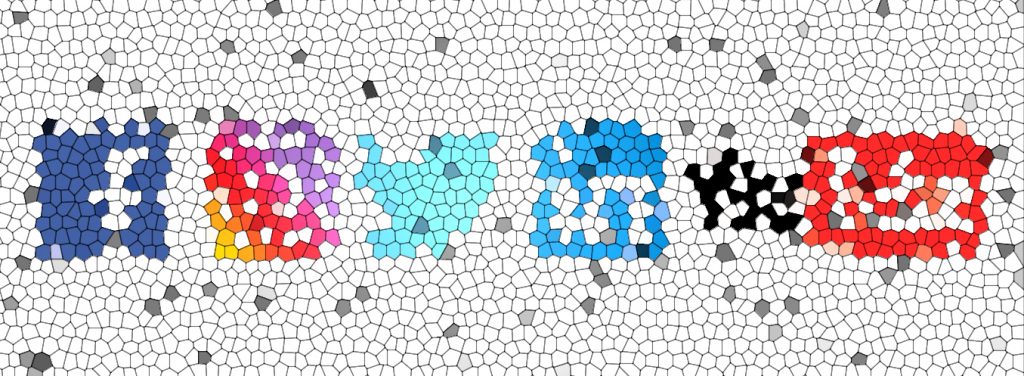
Digitized Koffee With Nick
Hashtags... What Are They Good For?
By Nick Kossovan
There is probably no aspect of navigating social media platforms that is more misunderstood, discussed and misused than hashtags. How someone uses hashtags identifies if they are a digital native as opposed to being digital naïve.
Hashtags are a simple, free, and transparent way to label and discover content on social media platforms. By prefixing words with the hash symbol (#), the post author calls out which words, or phrases, are essential to them or their audience. Hashtags turn phrases and words into searchable links. You click on the hashtag (#travel, #HappyNewYear2020, #ClimateChange), and you will see all the posts centred around that topic or subject.
Basically, a hashtag’s job is to draw attention, organize, and promote content. It has changed the way social media content is searched, shared and creates awareness. A great example of a hashtag creating awareness is when the hashtag #MeToo was used to raise awareness about sexual assault and harassment.
In approximately 12 years, hashtags went from being a useful tool only known in programmer culture to a mainstream organizational device for online content. Today most social media platforms support the functionality of hashtags.
For those of you who are trivia buffs, Chris Messina (@chrismessina) unleashed the first Twitter hashtag on August 23, 2007, as a way of making it easier for people to find, follow, and contribute to a conversation. The first Tweet with a hashtag was, “how do you feel about using # (pound) for groups. As in #barcamp [msg]?”
The ease of use has made hashtag usage prevalent. You do not need any special software, coding experience, or a college degree to create a hashtag. All you need to do is put the hash symbol directly in front of the word or phrase you want to turn into a hashtag and follow these simple rules:
No spaces (#Canada, not # Canada)
- No punctuation (#SuperBowlLIV, not #SuperBowlLIV!)
- No special characters (#ForSale, not #ForSale$$$)
In case you are wondering, capitalization only matters for readability. #KnowWhatIMean?
The key to maximizing your hashtag usage is to understand your audience and/or the audience you want to reach… think like a marketer!
There are several reasons why you should use hashtags when posting on a social media platform. The first being hashtags can be instrumental in you, and you post, being read. Many people research by searching on specific hashtags. By using the hashtags that may be of interest to those you are trying to reach, you increase your chances of being found.
Hashtags will improve your clickthrough rate. According to research from Buddy Media, for Twitter, tweets with hashtags receive twice as much engagement as those that do not. In other words, including hashtags can double the engagement and increase the clickthrough rate of a social media post. Interestingly, there does seem to be an upper limit. Tweets with more than two hashtags saw engagement drop by 17%. Most likely because too many hashtags appear “spammy,” which is a turn-off.
The following Tweet, “I live in a beautiful part of the world here in northern Ontario. Most Canadians love this country and everything it has to offer.” would receive few views and engagement as opposed to “I live in a beautiful part of the world here in northern #Ontario. Most Canadians love this country and everything it has to offer. #Canada”
Dan Zarella, Hubspot’s social media scientist, analyzed 1.2 million tweets. He found that tweets with one or more hashtags are 55% more likely to be retweeted than those without them, which shows the clout hashtags have on engagement.
Personally, I find the best way to use hashtags is to find ones that already exist, and if appropriate, trending. There are several tools to help you find relevant hashtags such as Hashtagify (my go-to), RiteTag and Trendsmap. You can also look at what hashtags social media influencers, who are speaking to your audience, are frequently using.
Used sparingly, respectfully, and proportionally, the value generated from the use of hashtags warrants you mastering its usage and making it a common practice to insert into your social media posts. When using a hashtag, keep the following top of mind:
- Since most social media platforms have character limits, your hashtags should not be long. (#Love, #fashion, #Art)
- To provide better readability, use capital letters on each word in the hashtag. (#JamesBond, not #jamesbond)
- To maximize engagement and shares (retweets), use highly relevant hashtags. Spend a few minutes researching hashtags that will be pertinent to your post.
- Check hashtags that are trending and, if appropriate, use them to increase your post’s exposure significantly.
- Do not use more than 2 hashtags (3 in rare circumstances) in a post.
- Above all, be creative… think like a marketer!
When used correctly, hashtags are an effective way to grow your reach, encourage engagement, shares and get discovered.
I hope #YouEnjoyed this #Column.
Nick Kossovan is the Customer Service Professionals Network’s Director of Social Media (Executive Board Member). Submit your social media questions to nick.kossovan@gmail.com. Selected questions will be answered in future columns. Follow @NKossovan on Instagram and Twitter.
